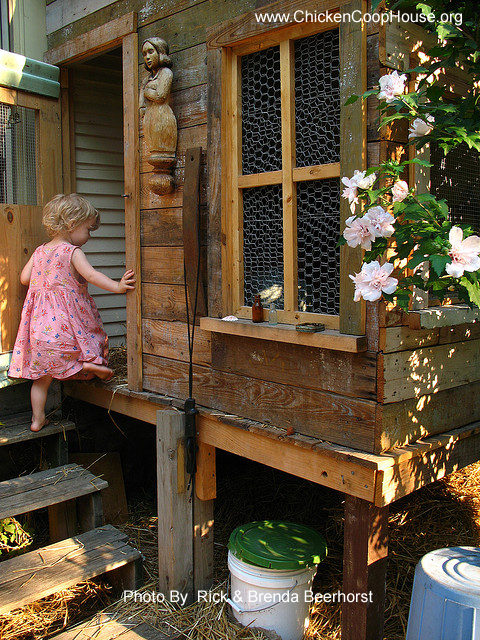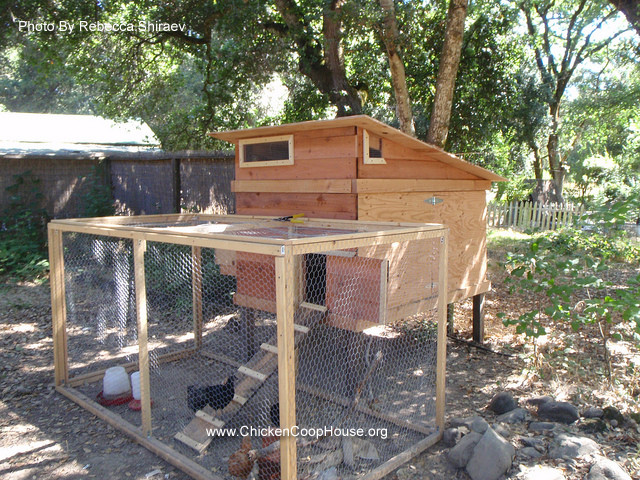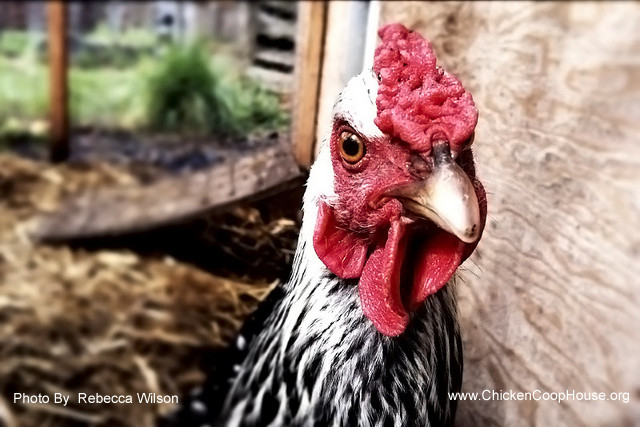 When some people go about constructing their own chicken coop they fail to take into account how to build it so that it lasts long enough to be worth the money invested in it. This problem can be overcome by gaining an understanding of how the materials should be used and getting an eye for the overall construction so that the coop will be sturdy and last a long time.
When some people go about constructing their own chicken coop they fail to take into account how to build it so that it lasts long enough to be worth the money invested in it. This problem can be overcome by gaining an understanding of how the materials should be used and getting an eye for the overall construction so that the coop will be sturdy and last a long time.
Landscape Preparation
First of all, before even beginning to build your chicken coop, you need to make sure the land under it is level and landscaped. There are a couple of ways you can tackle this. You can look around your property for the ideal location to place your flock and then clear the land and level it, or you can take the easier route and find a spot on your land that is already level and fairly well cleared out so you can start building your coop without a lot of preparatory effort.
Not only will choosing land that is already flat and cleared save you a whole lot of work, it will also save you money. Of course, the choice is up to you depending upon where you prefer to have your new ‘poultry palace’ situated.
It is worth the effort to level and clear the land because it will help your coop last for a long time if it is built upon a solid foundation – you don’t want to find your hen house on the wonk or sinking down into the ground after a heavy rain.
Spend What You Need To Build A Solid Base
Don’t pinch pennies when it comes to building the structural base of your floor and framing the coop. Using cheap materials here could haunt you later. You don’t have to buy the most expensive but don’t choose materials based on price alone. Seek out cost effective supplies that will be durable and long lasting.

Include Windows In Your Chicken Coop Design
Light, and by default windows are very important to your chickens. Be sure to include them in your chicken coop design. Although they will want the nests to be in a secluded area of the coop there should also be plenty of light (and fresh air in the day time) coming in. The number of daylight hours directly affects how they lay which is one of the main reasons why many breeds of chicken will either greatly reduce the numbers of eggs they produce or stop producing altogether in winter. Warmth is also a factor, but light is probably the biggest one.
A chicken coop that is light and airy is also a much nicer and healthier place for the chickens to be. Ventilation, as ever, is important and if the windows get steamed up that is a sign of not enough ventilation, and in the cold weather that excess moisture could cause frostbite on their combs and wattles. Be careful where you place your windows. If you put them in the wrong area of your walls you can make them weak which makes the entire structure less sturdy.
Position the Chicken Feeders Wisely
Choose the position of your feeders after giving it some thought. You do not want to place them too high because the chickens won’t be able to reach their food. If you place them too low, the chickens will make a mess and scatter the food around which is a waste of money and will also attract rats.
Not only is scattered food a waste of money, it can be unhygienic for them to eat the food when in and around their droppings and the chickens will start scratching the scattered food and pecking at it which will damage your chicken house given enough time.
It is worth the extra time spent planning your chicken coop design and building it to be sturdy and durable. That way you won’t be constantly fixing up problems that arise and making repairs that wouldn’t be necessary if you had built the coop properly in the first place.



